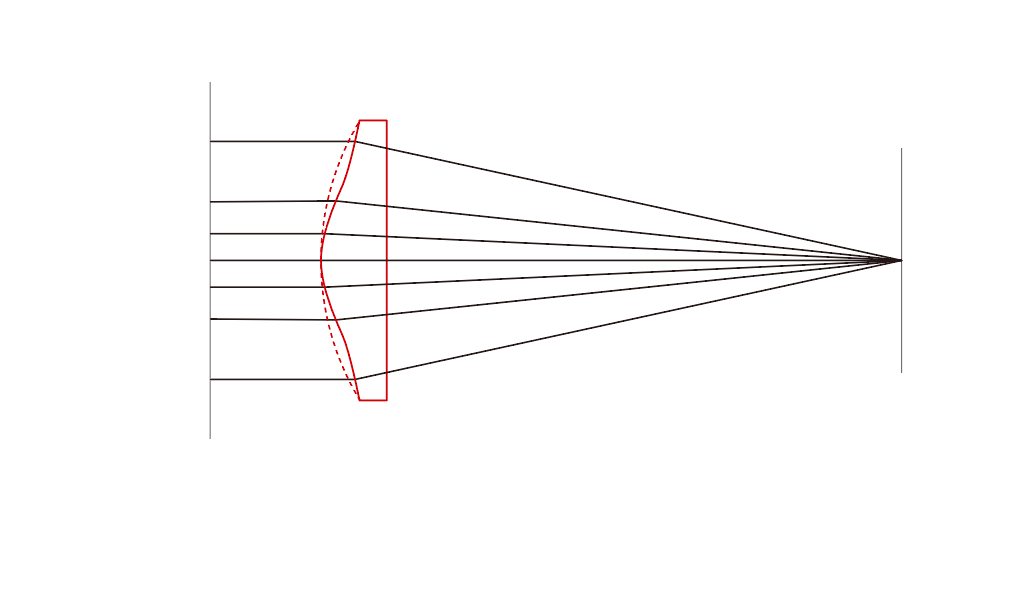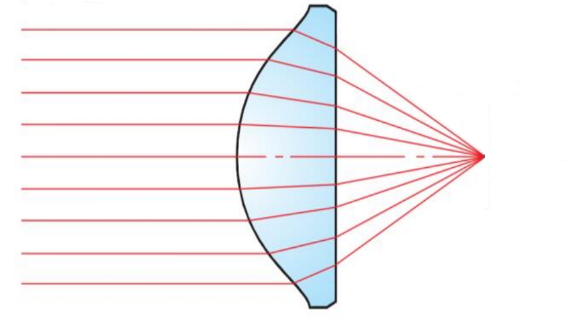Aspheric Lens
Aspheric Lens refers to a lens whose surface is not spherical or cylindrical. Traditional lenses are usually spherical, meaning that the surface is a part of a sphere. The most significant advantage of Precision Aspheric Lenses is that they can minimize aberrations by adjusting and optimizing the cone constant and non spherical coefficient. This may make them perform better in optical systems, especially in situations where high precision is required, such as laser collimation.

Collimation is adjusting the light rays to make them as parallel as possible. The laser itself already has good directionality, but the beam may have some divergence due to the structure or divergence angle of the laser. The purpose of collimation is to reduce this divergence and keep the beam parallel over longer distances, which is crucial for applications such as laser cutting, communication, and healthcare.
Precision Aspheric Lenses can more effectively correct aberrations, especially spherical aberration, which can cause the beam to not be perfectly focused or collimated. Traditional spherical lenses may still have some divergence or insufficient focus in the collimated beam due to the presence of spherical aberration during collimation. Precision Aspheric Lenses can eliminate these aberrations and achieve better collimation effects through complex surface design.
In fiber optic communication, laser needs to be collimated before entering the fiber optic cable, or collimated after being output from the fiber optic cable. The use of Aspheric Lenses may improve coupling efficiency and reduce signal loss.
In laser processing, such as cutting or engraving, the quality of the collimated laser beam directly affects the processing accuracy, and Precision Aspheric Lenses may play a key role here.
Medical applications, such as laser surgery, require highly collimated laser beams to ensure accuracy and safety. In addition, high-precision experiments in the field of scientific research,
Research instruments: used for experiments requiring ultra Gaussian beams such as interferometers and atomic traps, with a collimation degree of up to λ/10 wavefront error to ensure measurement accuracy.

In summary, Aspheric Lenses have become the core components of laser collimation systems through precise aberration control, and are irreplaceable in improving beam quality and simplifying structures. With the maturity of manufacturing technology, its application areas will further expand to cutting-edge fields such as quantum technology and LiDAR.

